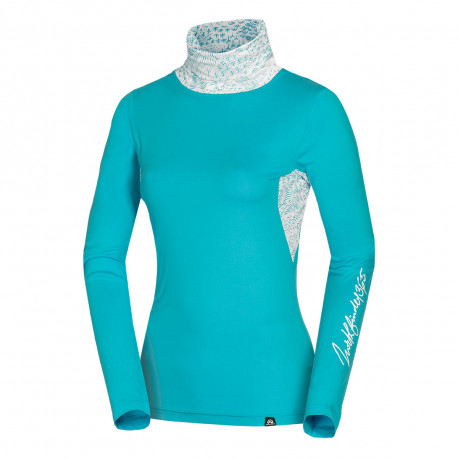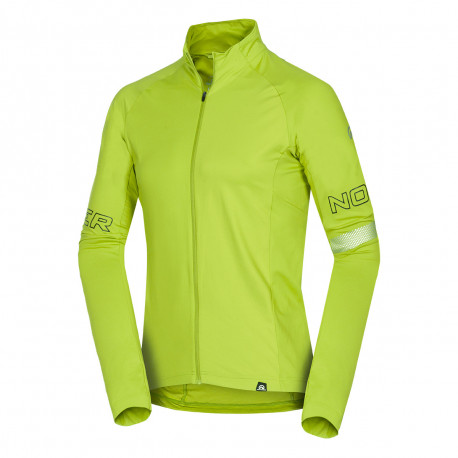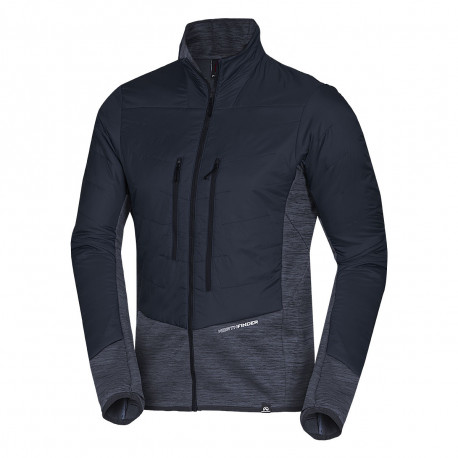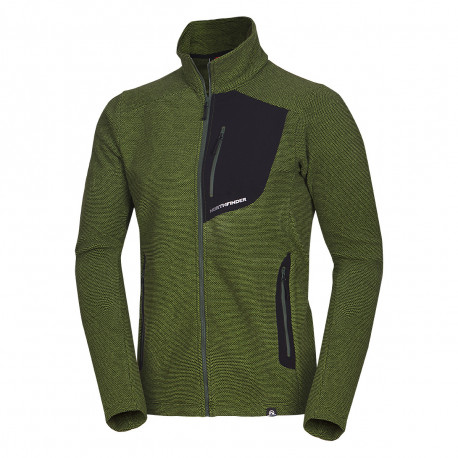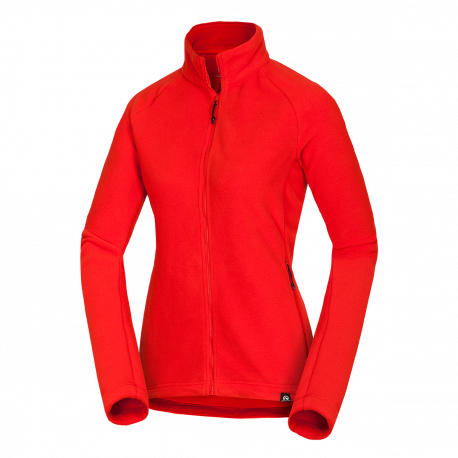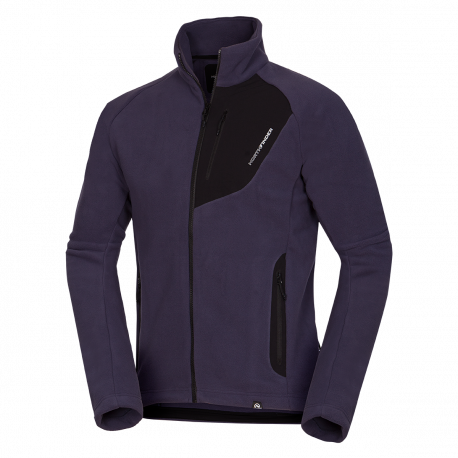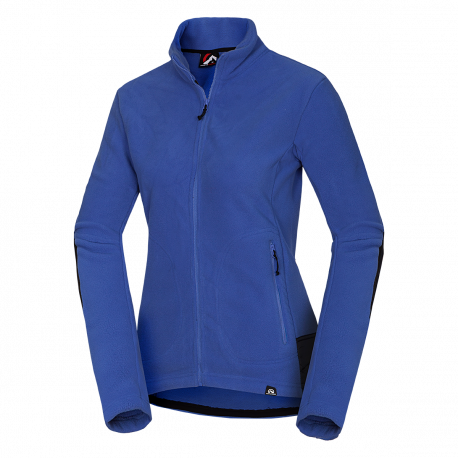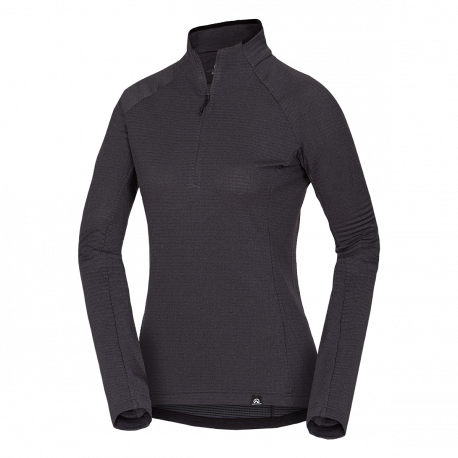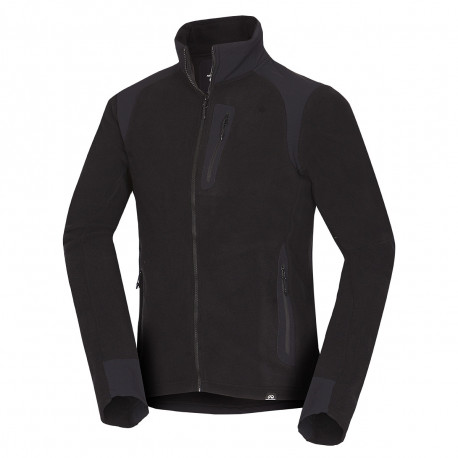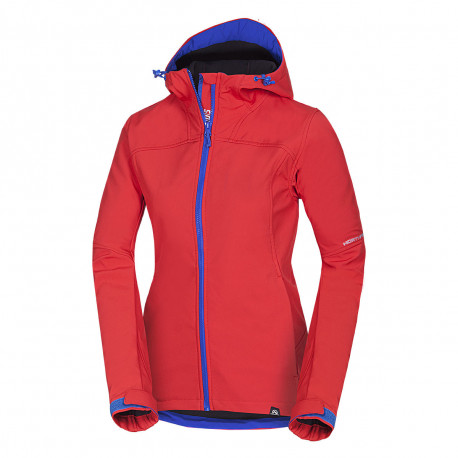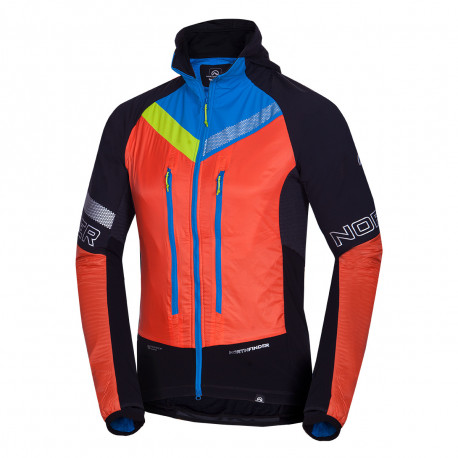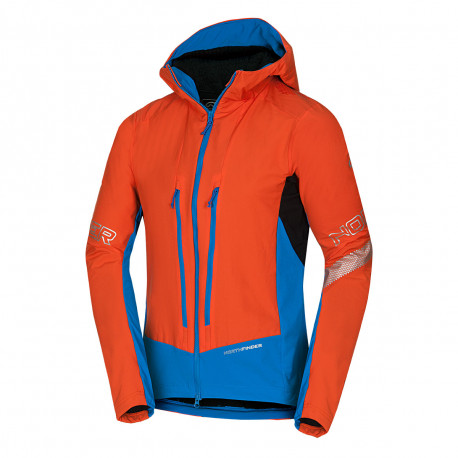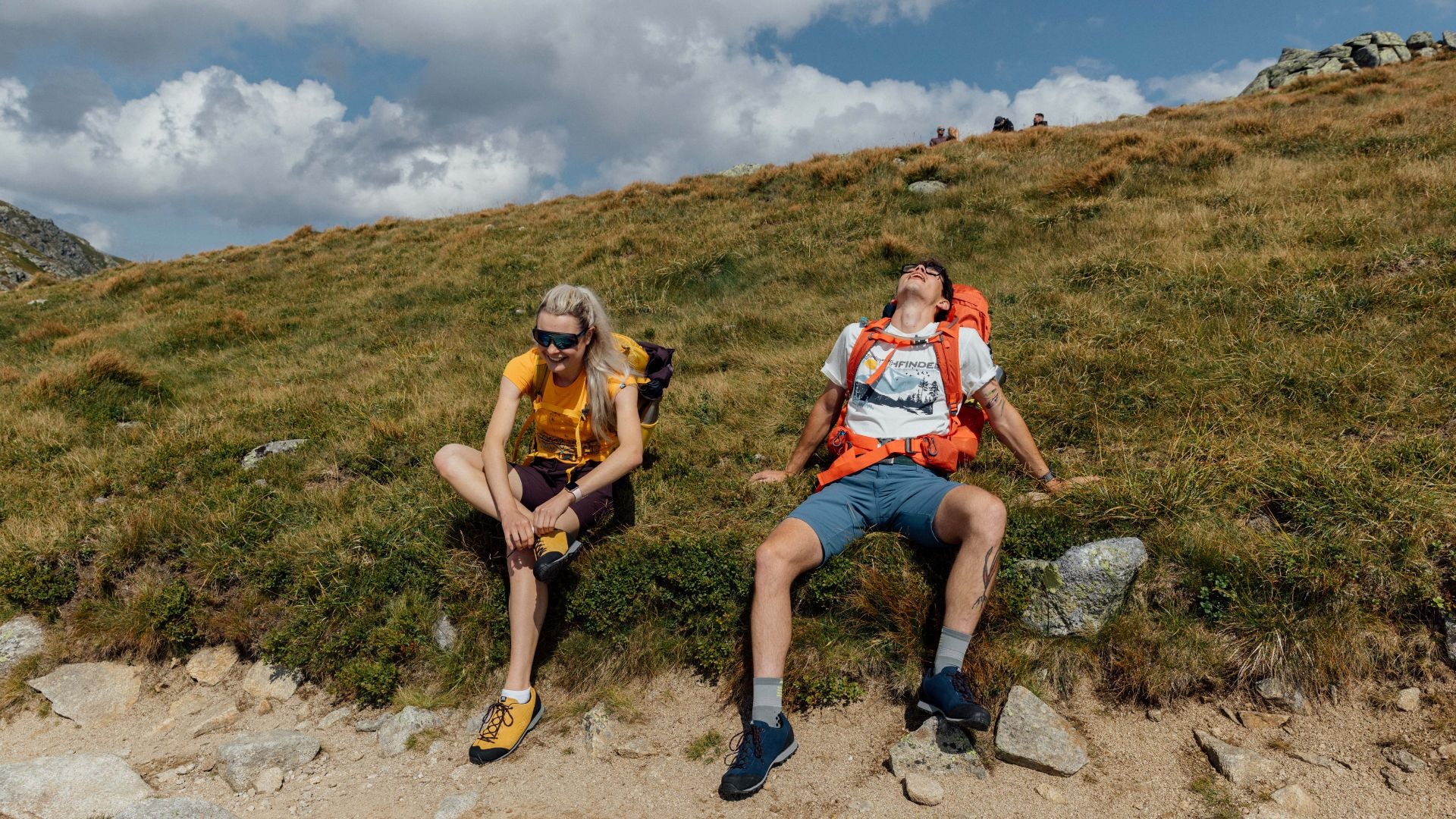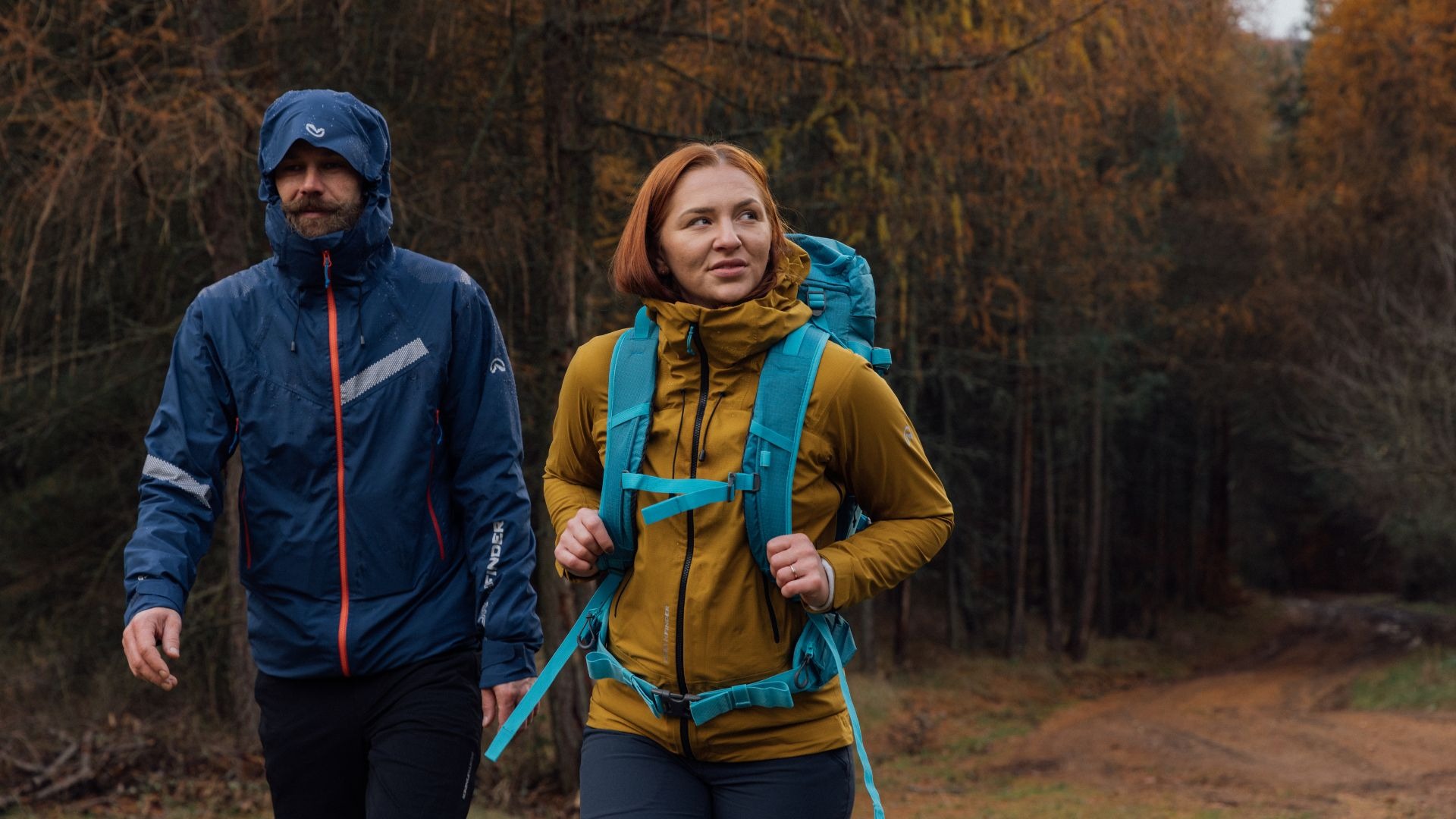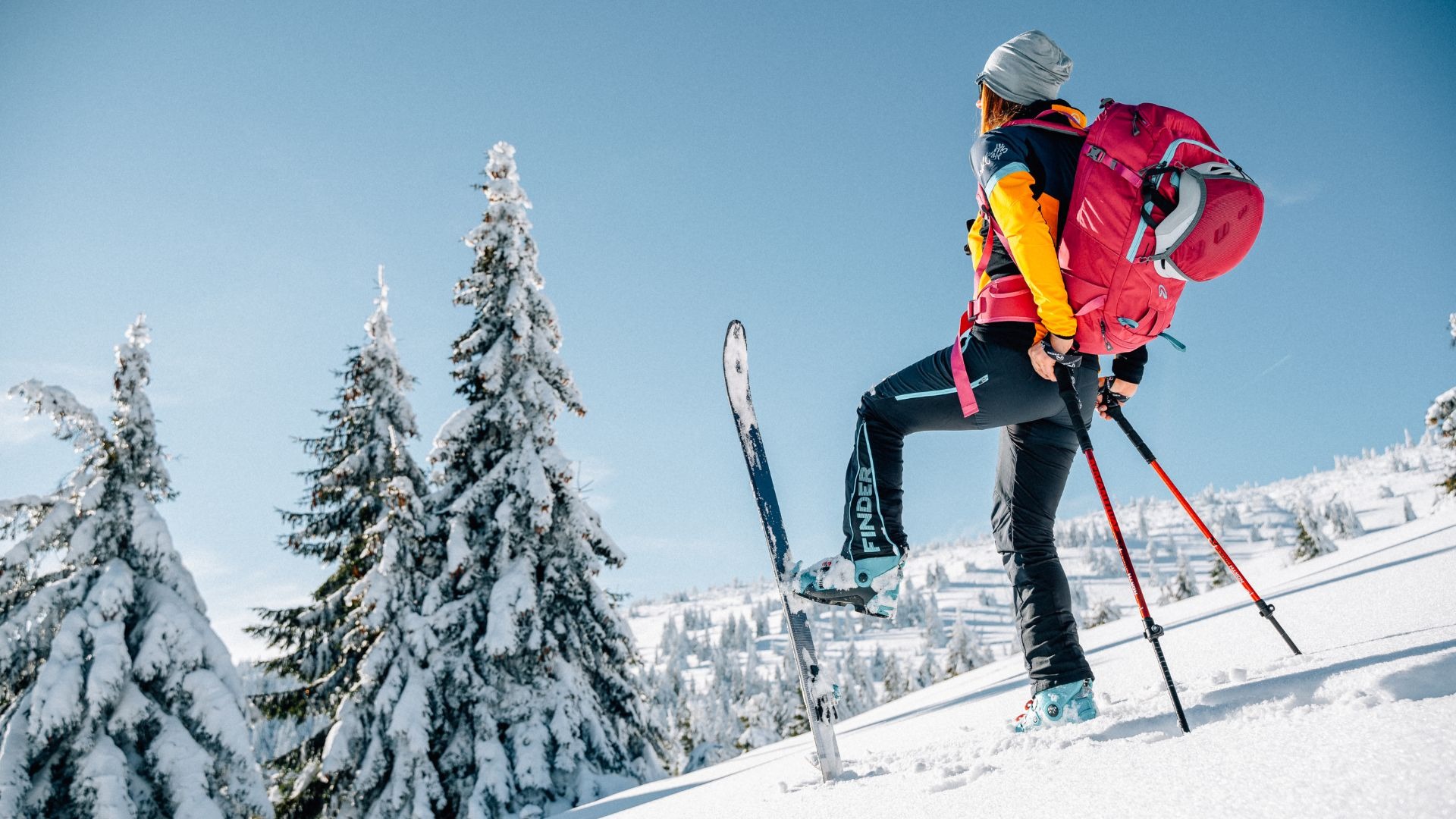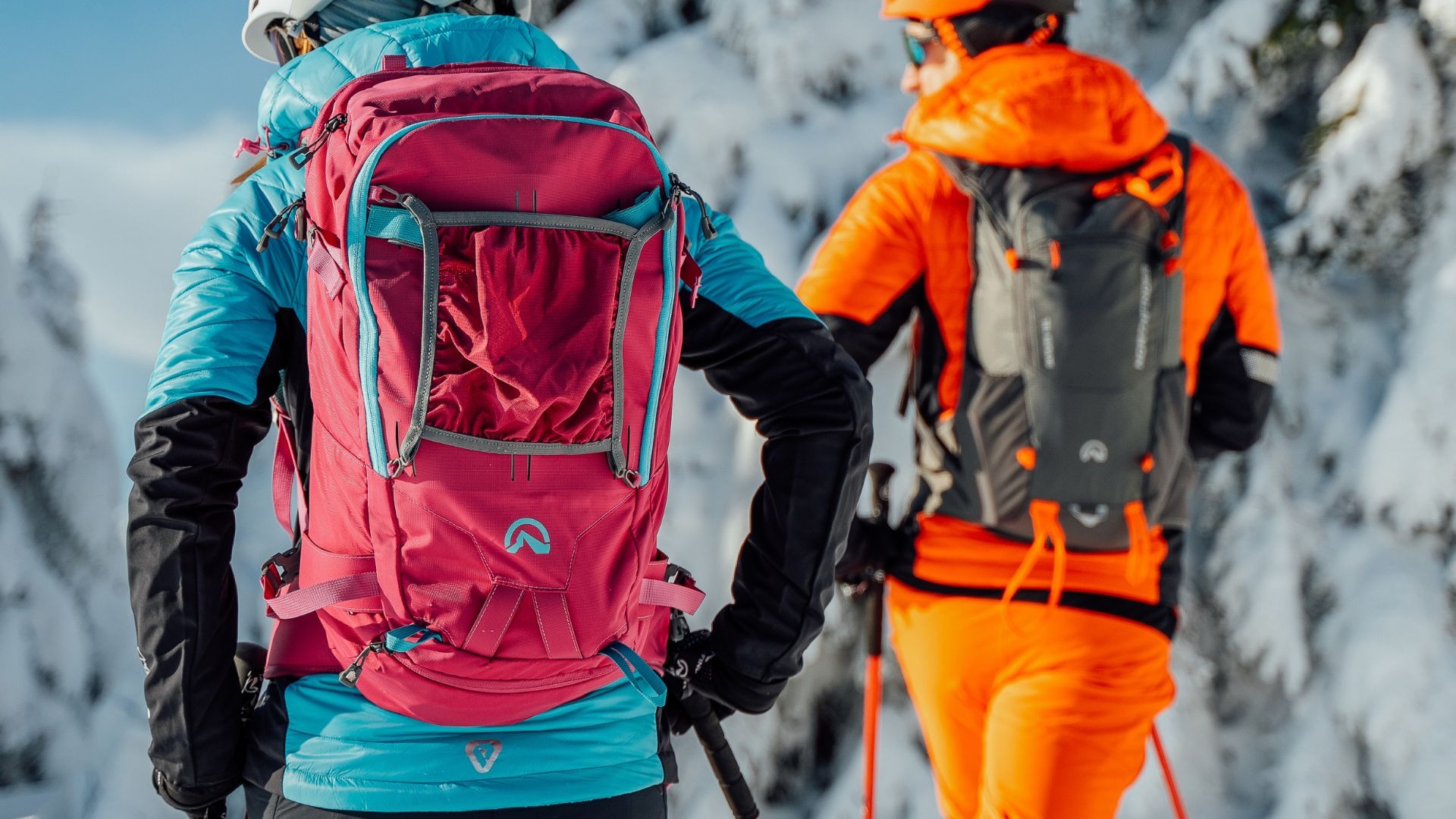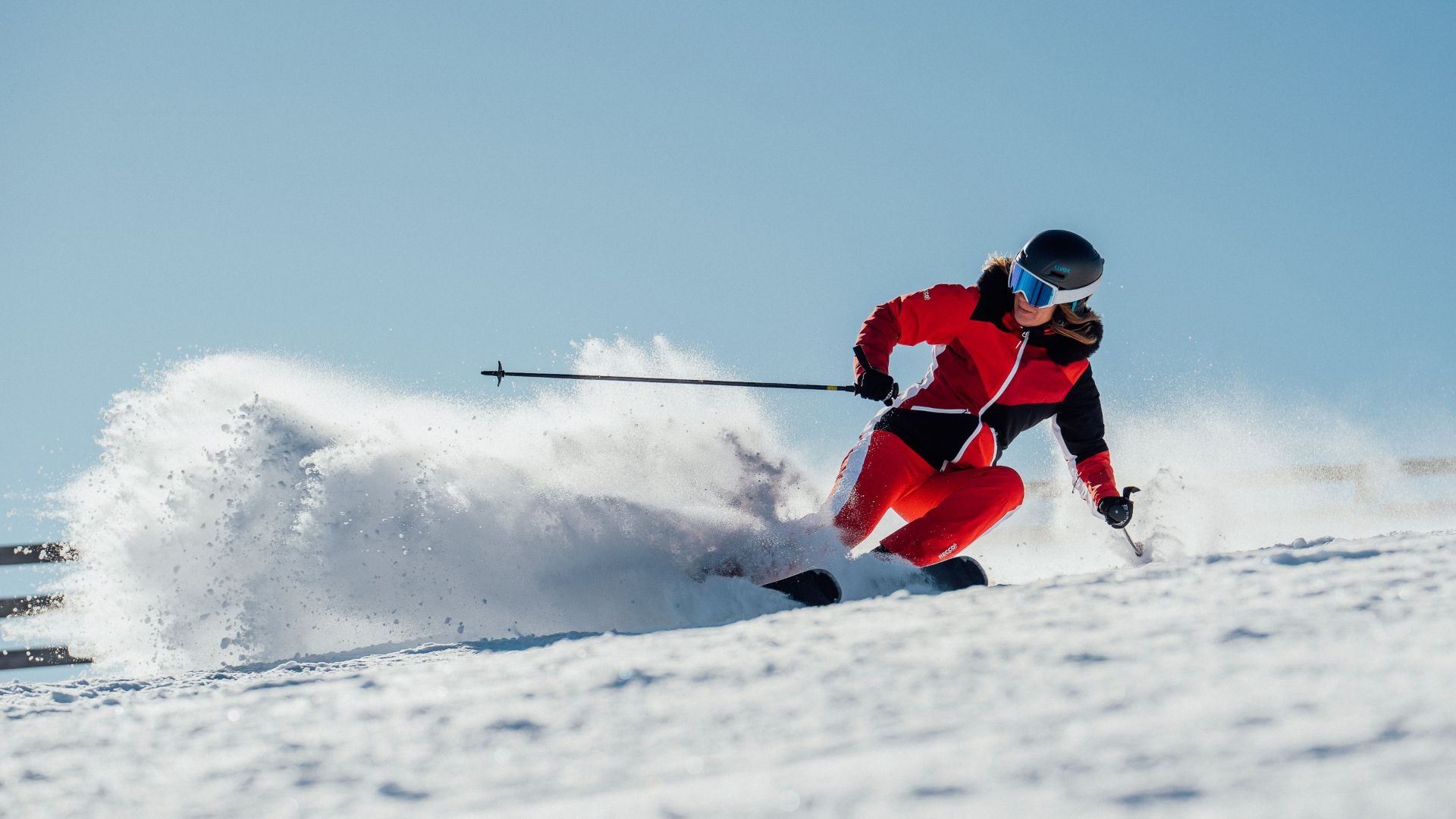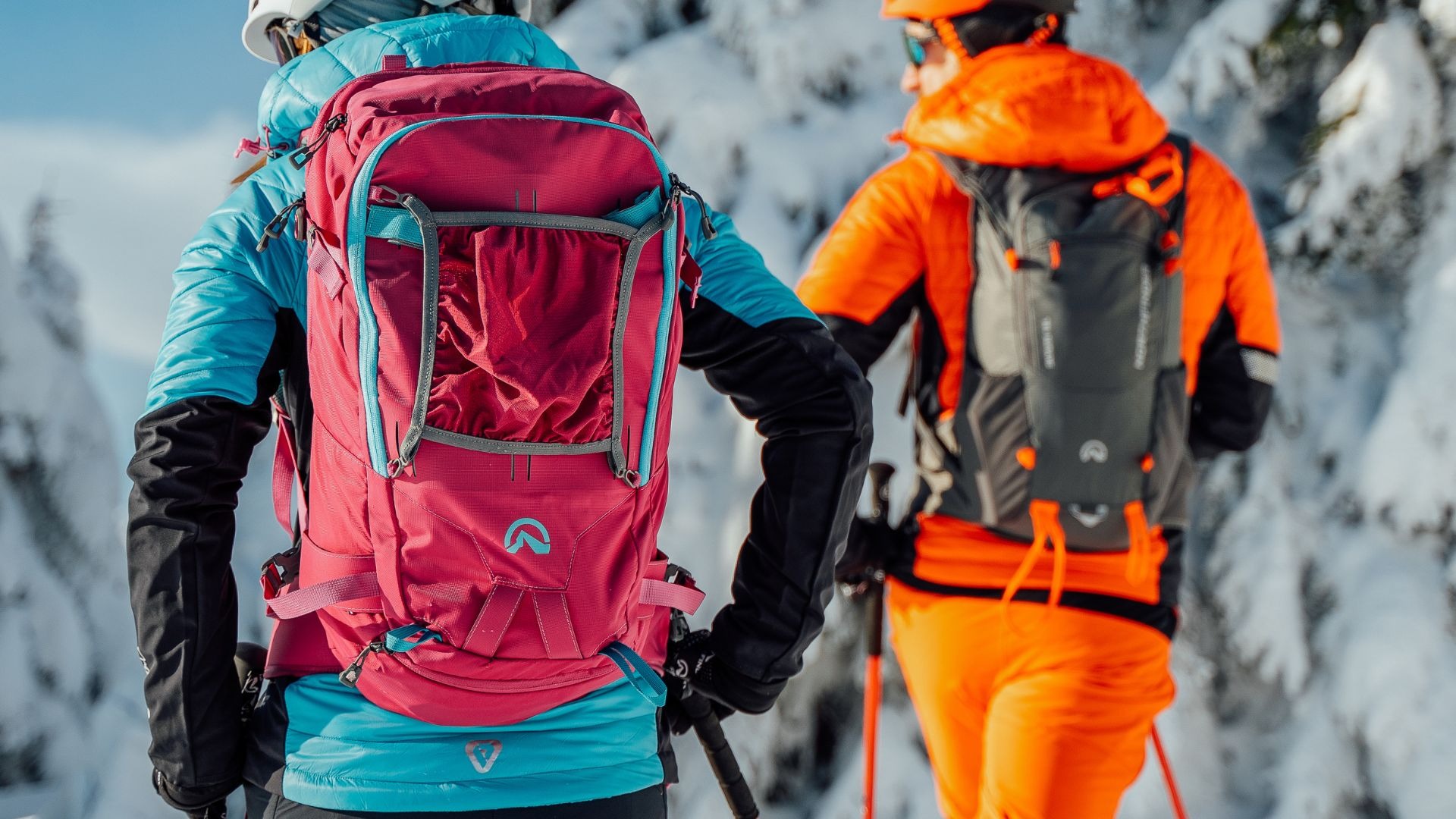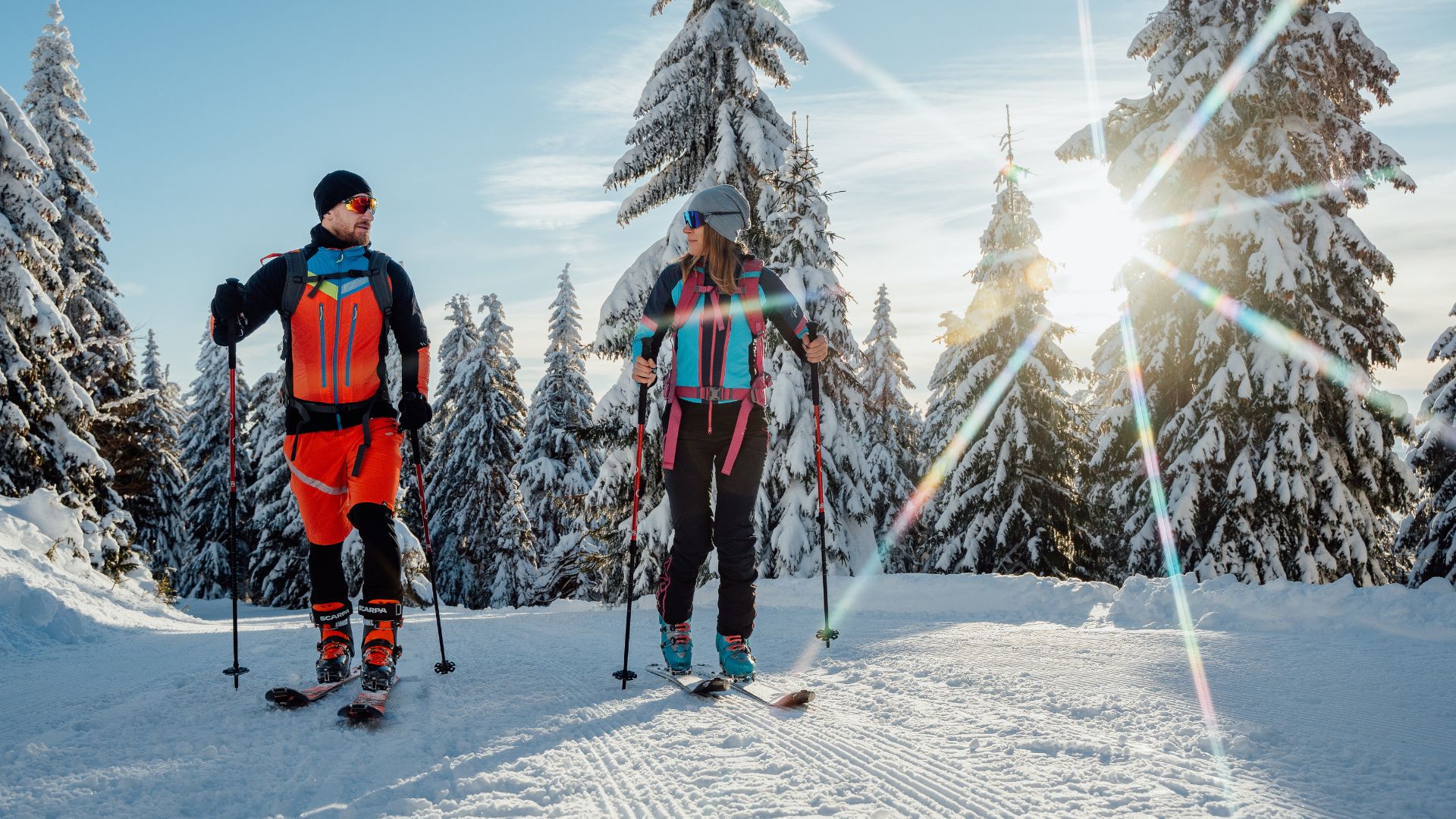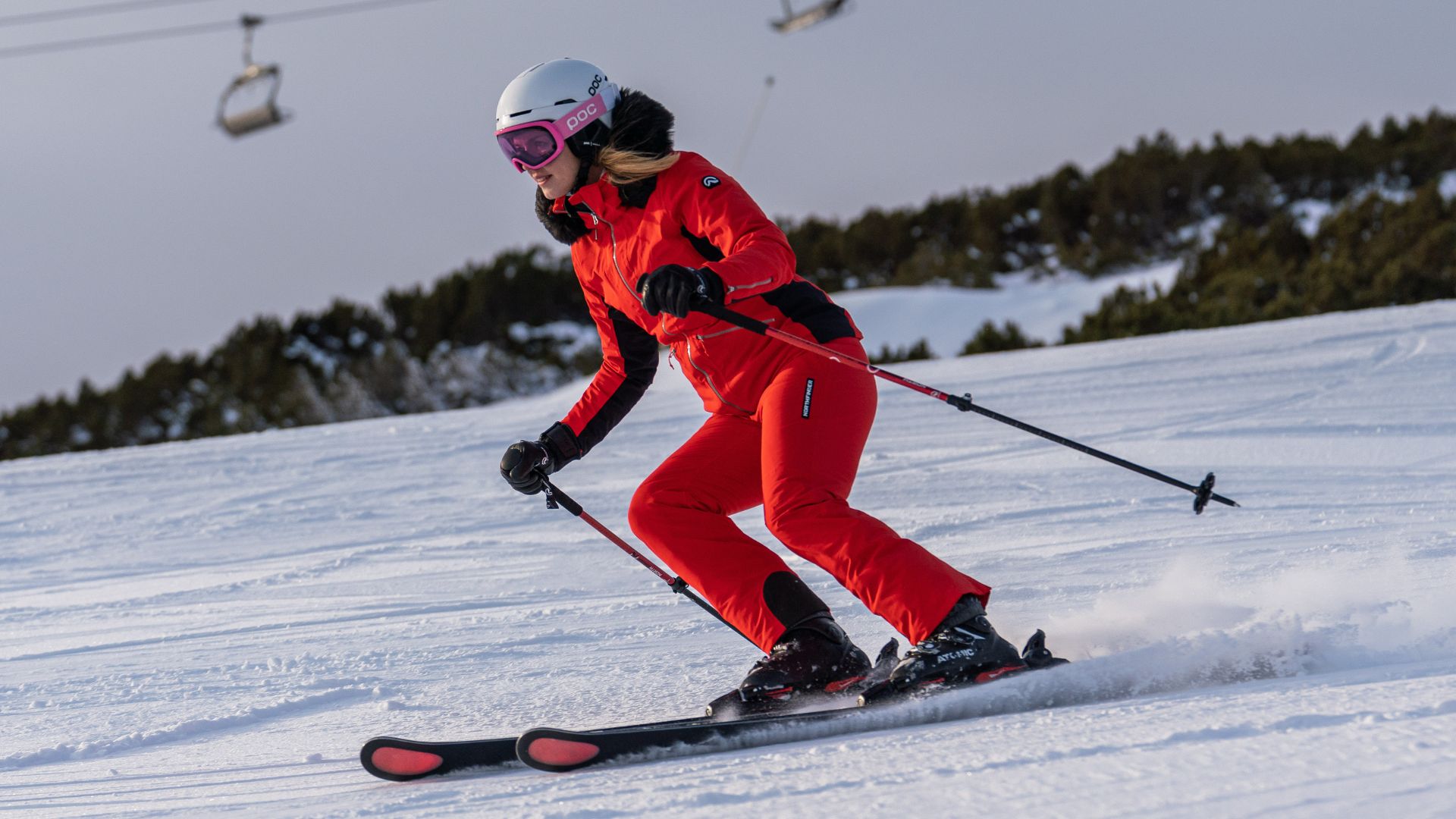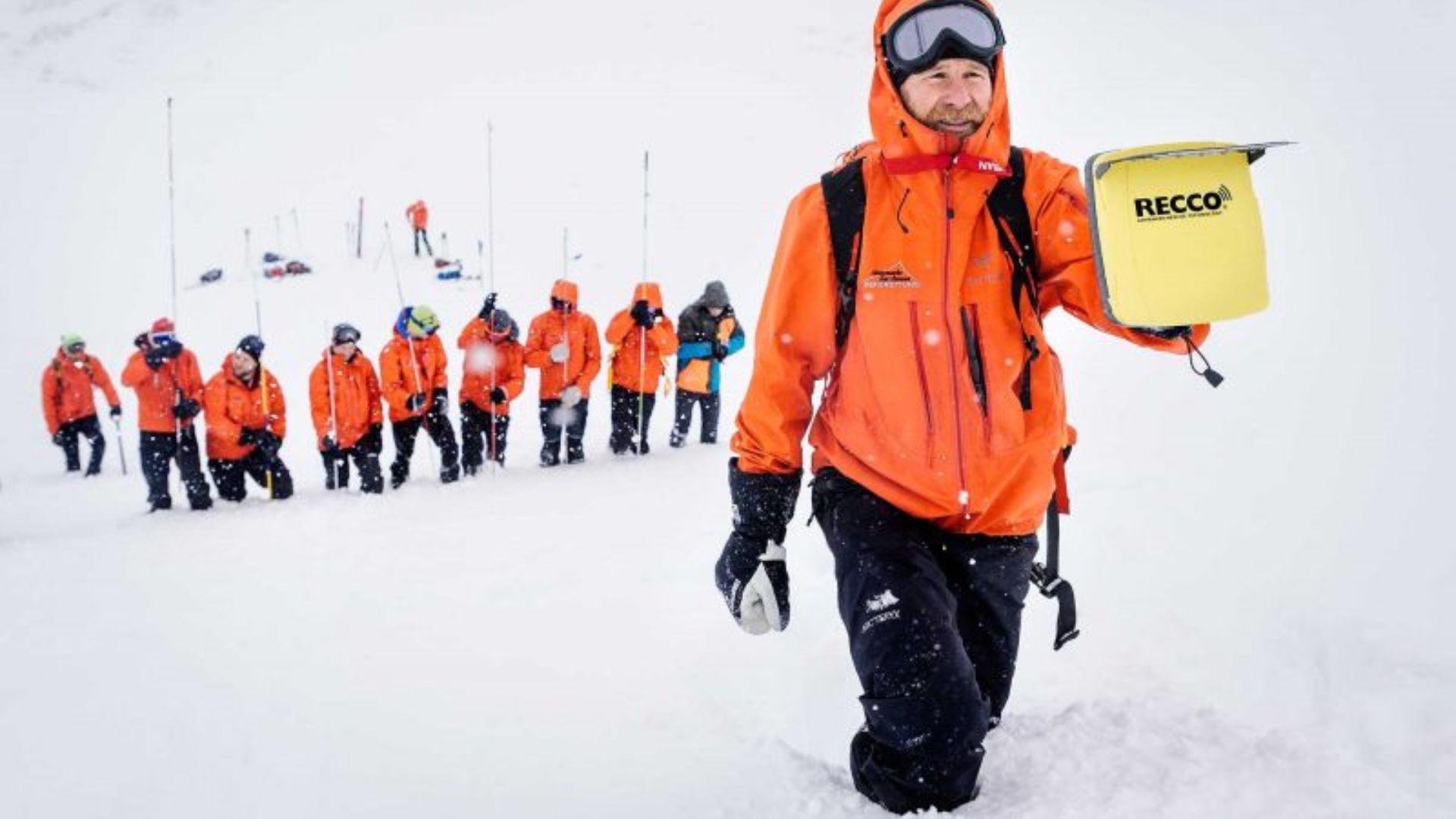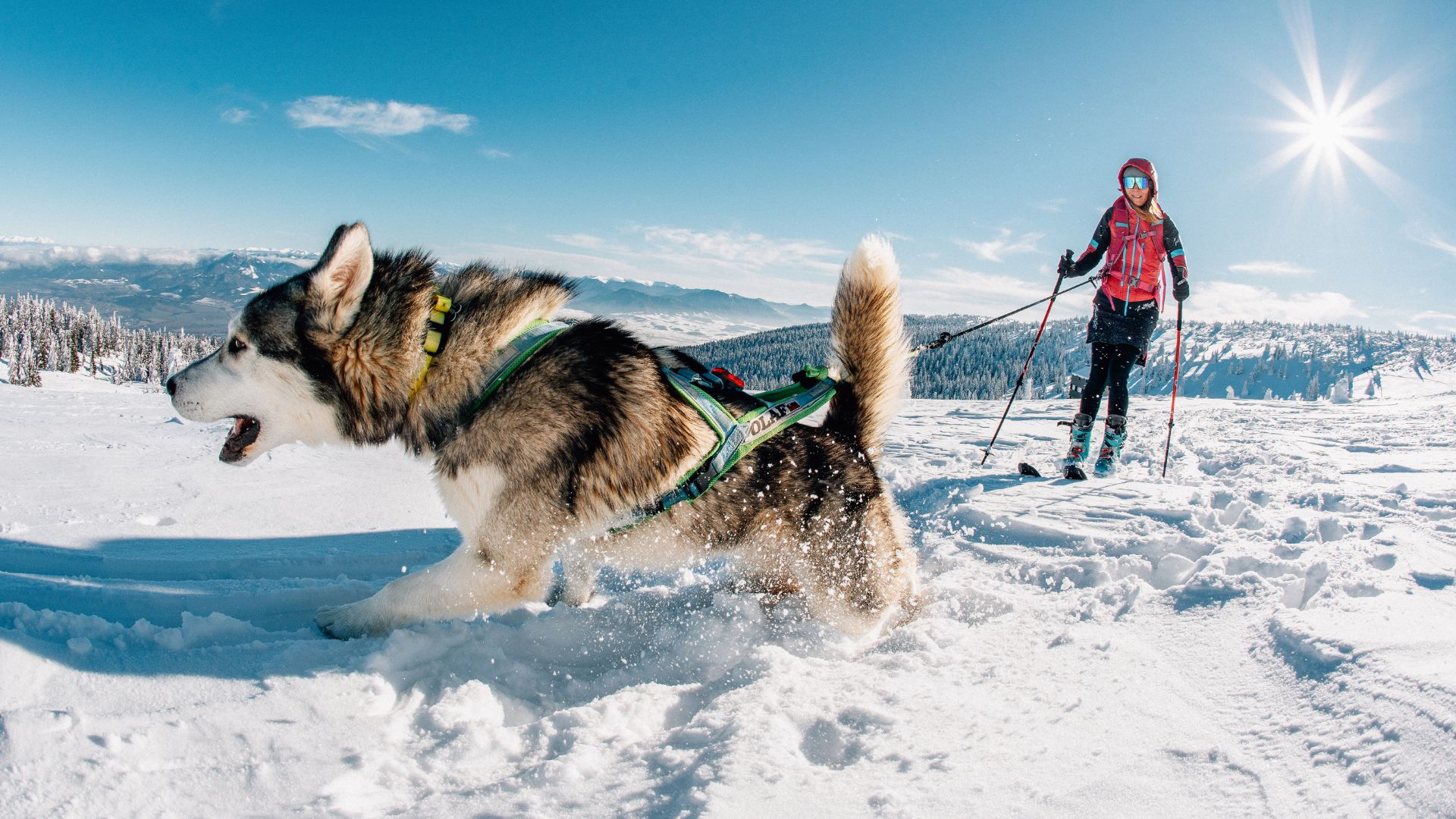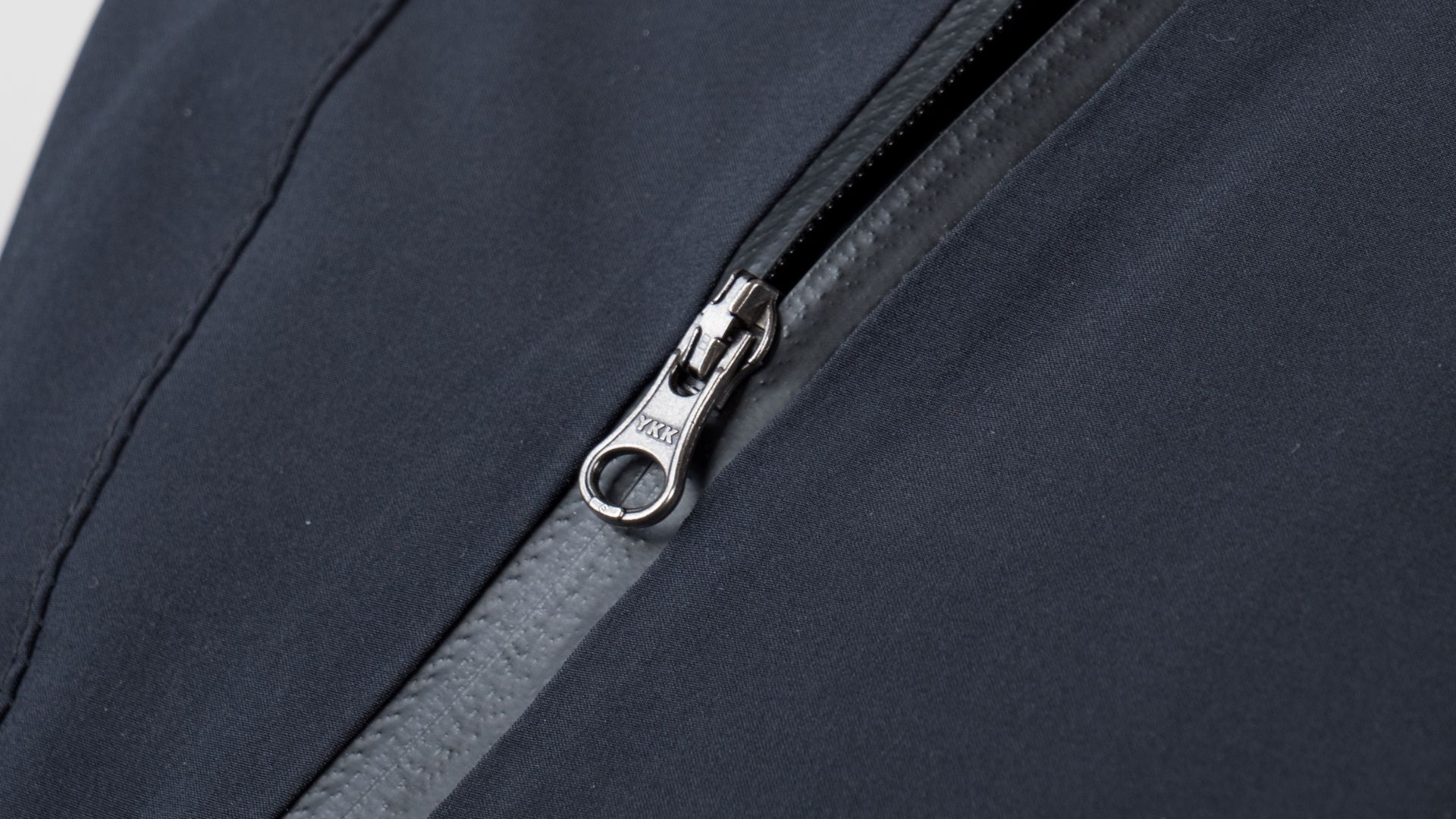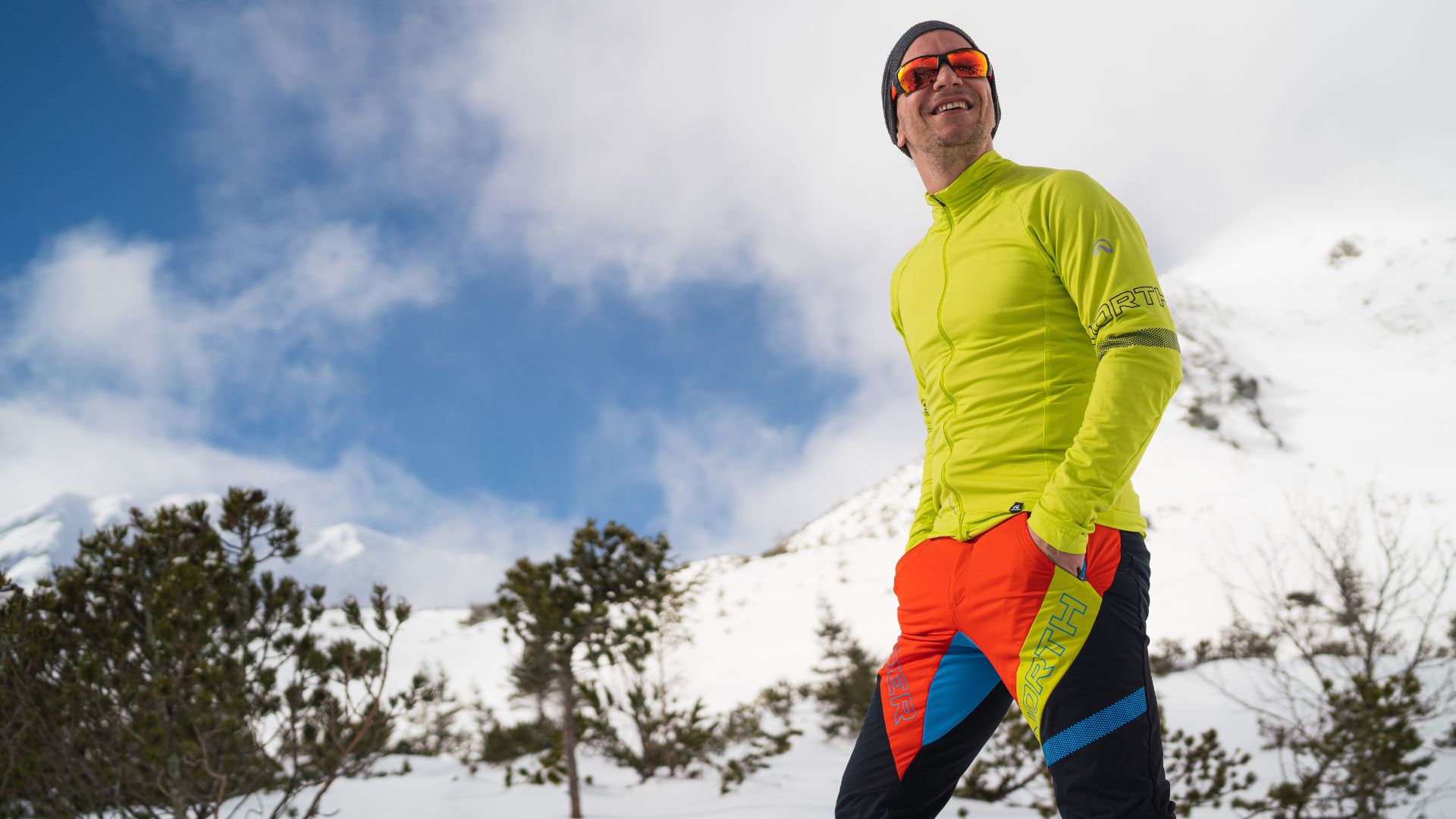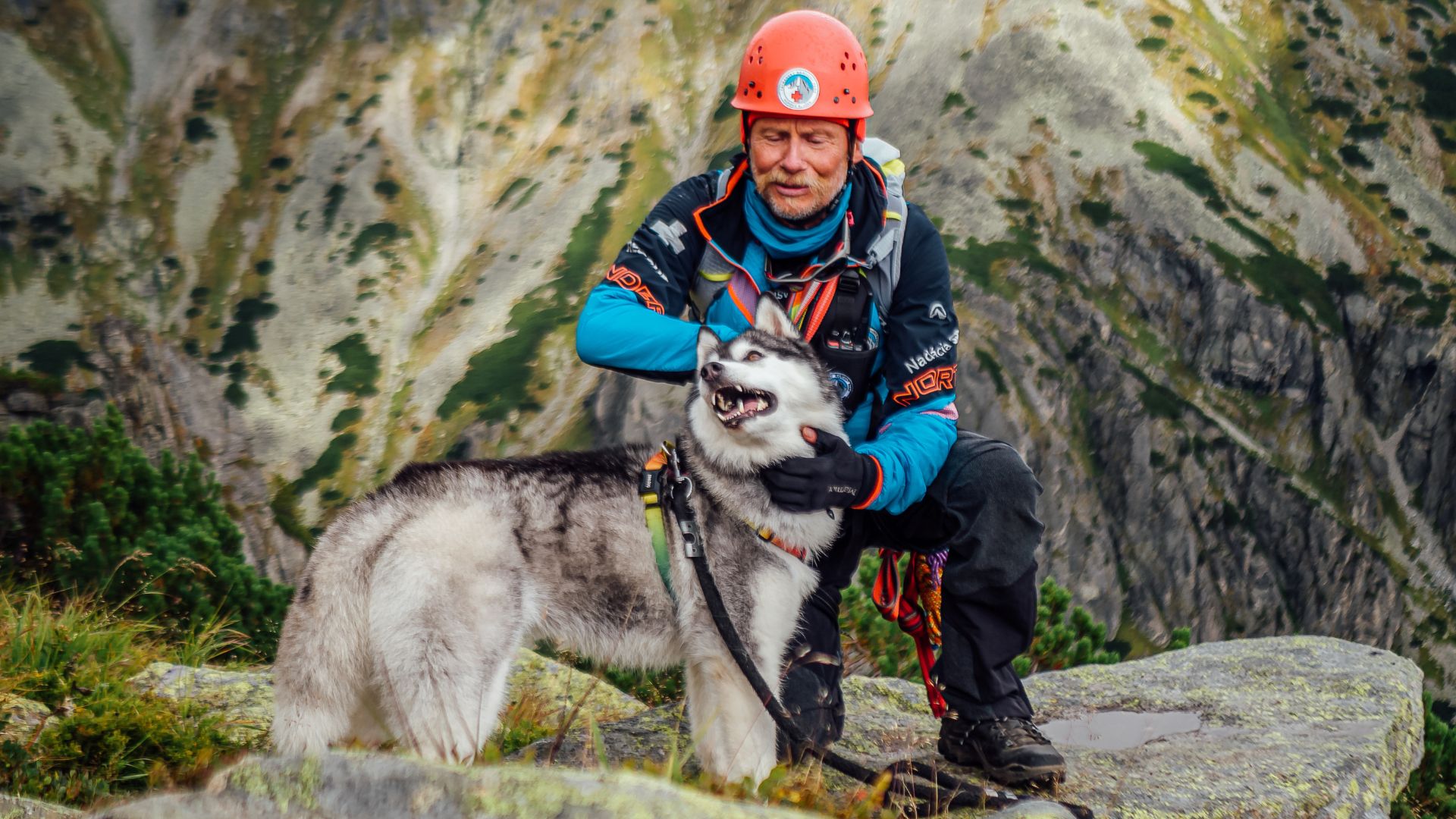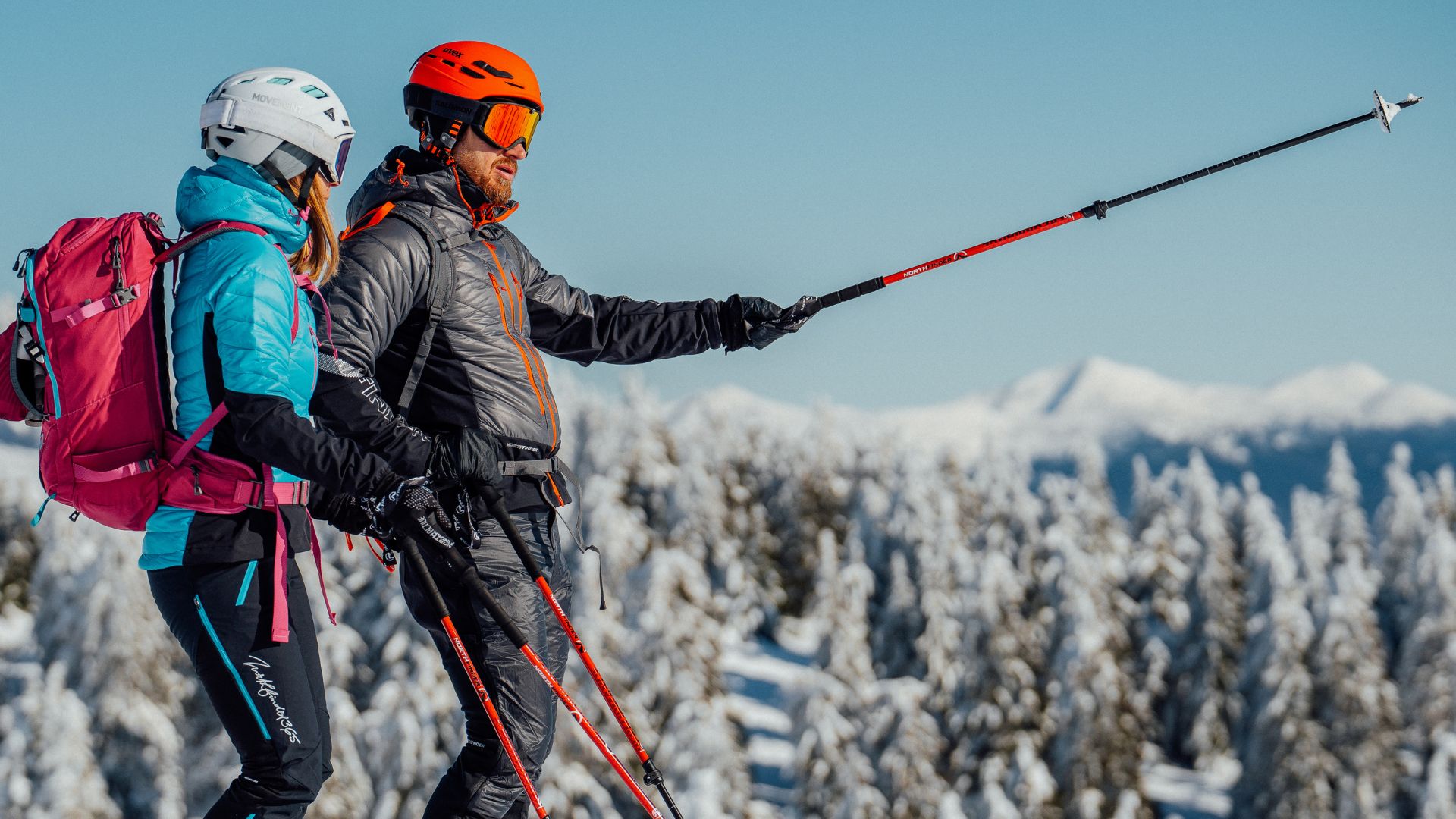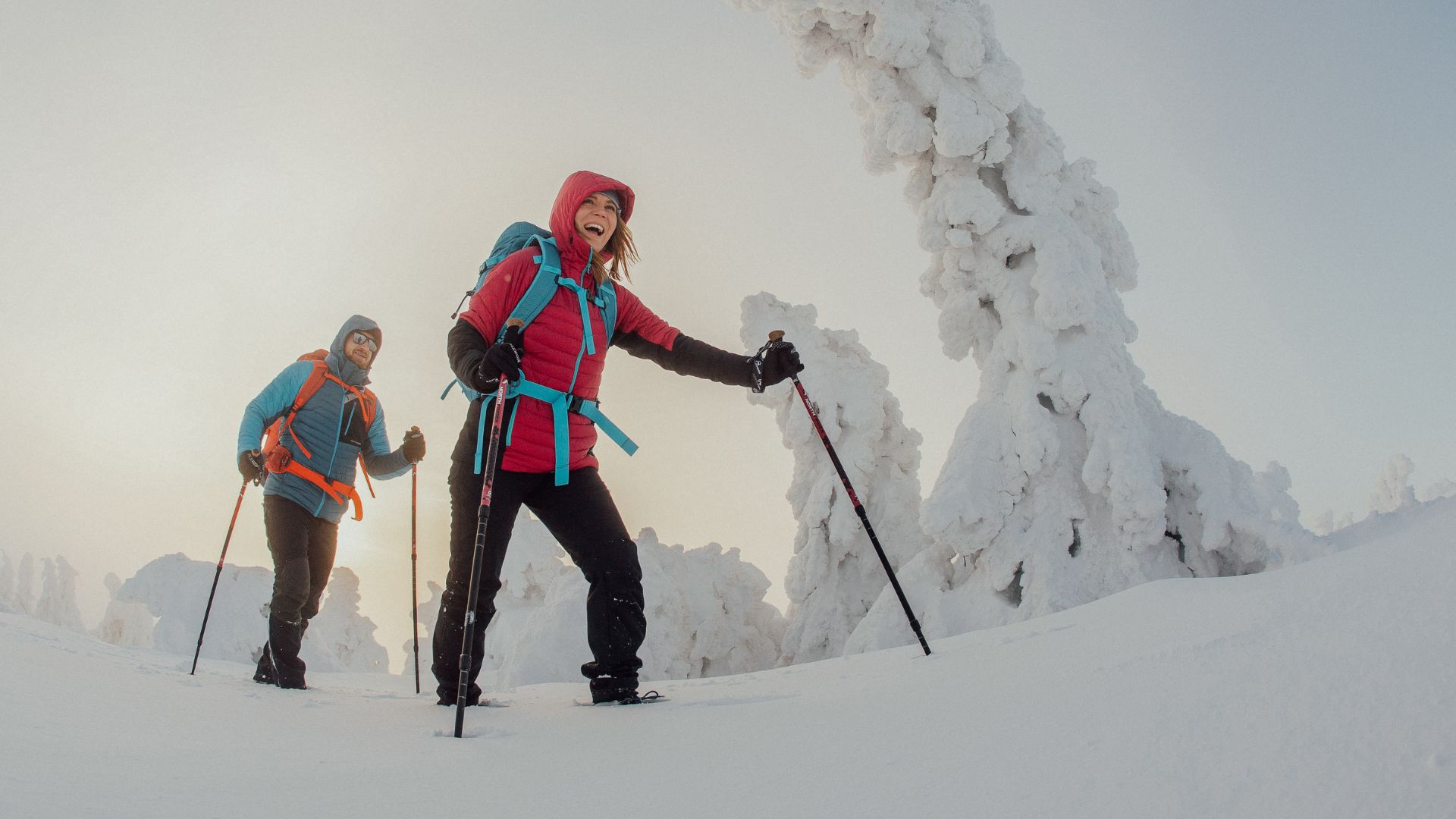How to dress for winter hiking: Protect yourself from the cold, rain, and wind.
On winter hiking you’ll appreciate clothes that are comfortable even in cold and unfavourable weather which don’t limit your physical activities. You want to feel the beauty of your hike, not the wet, cold, or warm but overly restrictive clothing.


In this article you’ll learn:
Basic layers of clothing for winter hiking
What changes if you choose a hybrid top layer
Proper layering is important. Layers are designed to complement each other. You can have the best products, but if you combine or layer them incorrectly then they won’t work together as you’d like.
Three basic layers for optimal comfort
Lower layer - thermal underwear: Elastic, quick-drying and pleasant to the touch
This wicks sweat away from the body and into other layers of clothing, keeping you dry. The material should be pleasant to the touch so that it does not chaff or compress on your body, and it should be elastic to allow free movement. Extremely elastic Dri-release® DUO material fulfils these functions perfectly. Suitable natural alternatives include merino.
Mid layer - sweatshirts mainly made of fleece/microfleece: Warm, insulating layer
It keeps you warm and works well with the base and top layer of clothing, especially for thermoregulation and wicking excess moisture. With this layer you will appreciate a warm, quick-drying, and elastic material, such as Dri-release® DUO fleece or microfleece.
Top layer - durable, functional jackets and trousers: Protection from bad weather
The top layer protects from the weather - wind, rain, snow, and frost. And thermoregulatory too - to breathe, remove excess heat and moisture, and avoid the "plastic effect". That would destroy the functionality of other layers.
Protection against water: the water column should ideally be 10,000 mm H₂O
Breathability should ideally be 10,000 g/m²/24 h
Wind resistance is ensured by densely woven materials, soft-shells, membranes
Layering with hybrid clothing
Hybrids change the principle of layering by combining two layers (middle and top) into one. Hybrid jackets and trousers have insulation that help maintain body heat, and zones protect you from wind, moisture, and other adverse weather conditions. With breathable panels, hybrids also excellently regulate excessive heat and moisture from sweat.
APPROACHES TO LAYERING | ||
TRADITIONAL | HYBRID | |
| 1st layer | Thermal underwear - elastic and quick-drying T-shirt with long sleeves - lower long trousers made of the same material (optional according to outside temperature and what you prefer) | |
| 2st layer | Sweatshirt | Hybrid jacket/trousers combines:
|
| 3st layer | Hardshell | |
You’ll especially appreciate such clothing during intense stages of your hike or and when ski-touring because you won’t have to change clothes or remove layers.


